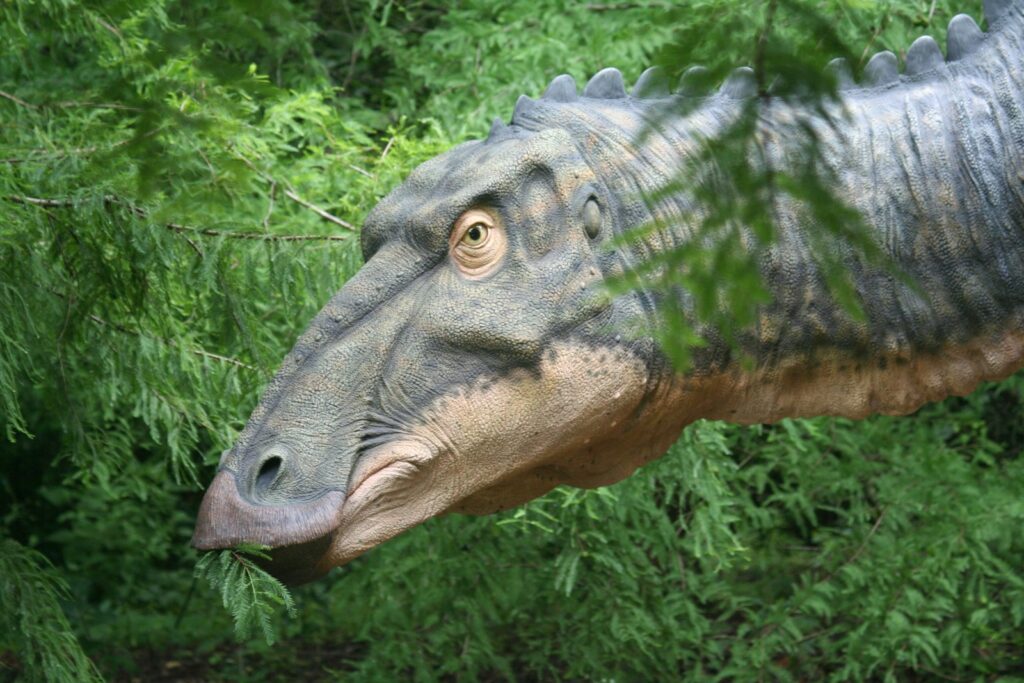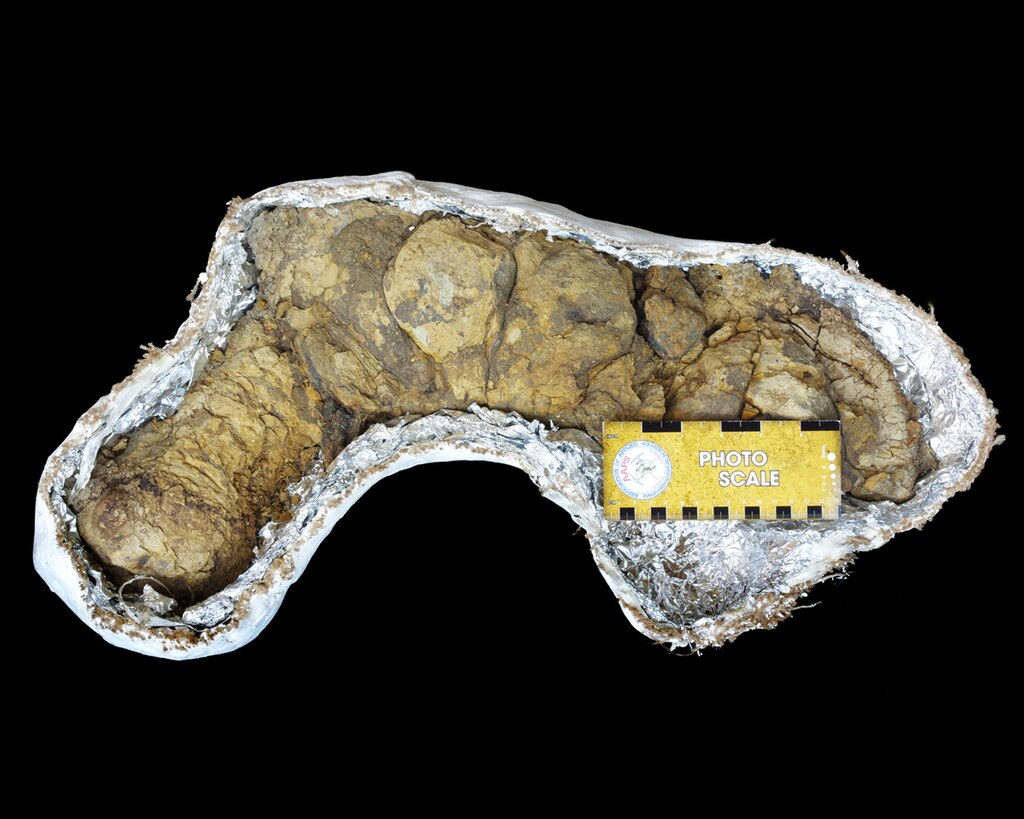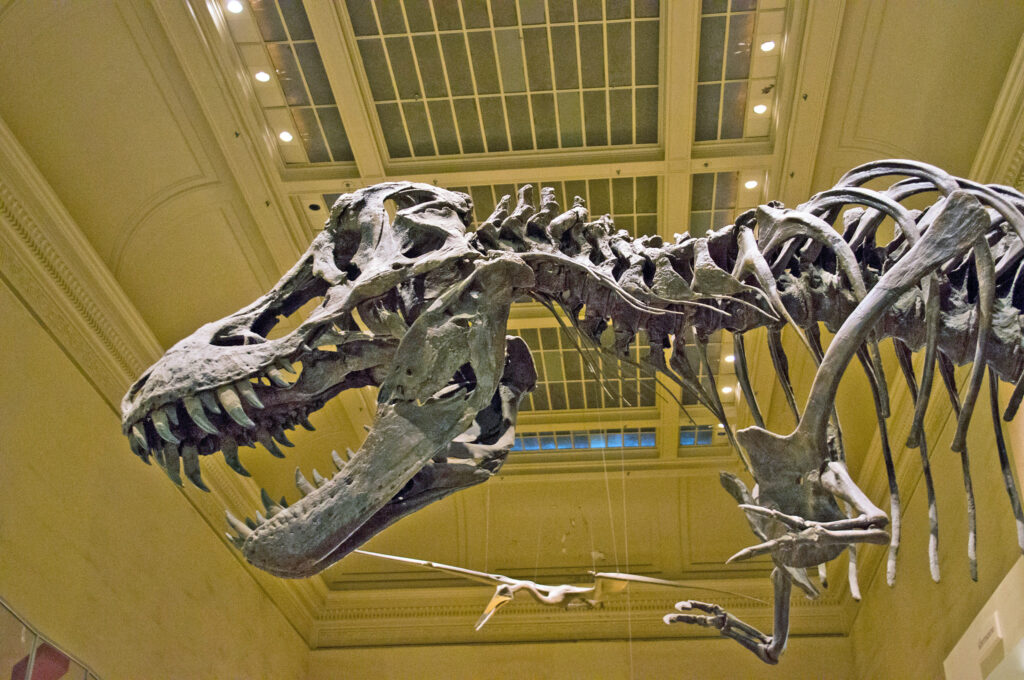The world of paleontology is buzzing with controversy. For decades, duck-billed dinosaurs have been dismissed as the gentle giants of the Cretaceous period – massive herbivores that spent their days munching plants with little more than basic survival instincts. But recent discoveries are turning this assumption upside down, sparking heated debates among scientists about whether these fascinating creatures possessed intelligence levels far beyond what we previously imagined.
The Great Intelligence Debate Begins
Picture this: you’re walking through a museum, staring at the massive skull of a Parasaurolophus, when suddenly you realize that behind those hollow eye sockets might have been a brain more complex than anyone suspected. Recent research has ignited a fierce scientific battle over the cognitive abilities of hadrosaurs, commonly known as duck-billed dinosaurs. Scientists are no longer content with the old narrative that portrayed these creatures as simple-minded plant-eaters. New evidence suggests they may have been social strategists, complex communicators, and problem-solving masters of their ancient world. The implications of this discovery could completely reshape how we understand dinosaur intelligence and social behavior. This isn’t just about dusty bones anymore – it’s about rewriting the story of prehistoric life itself.
Challenging the “Dumb Dinosaur” Stereotype
For too long, popular culture has painted dinosaurs as mindless beasts driven purely by instinct. Think of every dinosaur movie you’ve ever seen – the herbivores are usually portrayed as slow, docile creatures that exist only to be prey for the fearsome carnivores. But this stereotype is crumbling under the weight of new scientific evidence. Duck-billed dinosaurs, in particular, are emerging as sophisticated animals that may have rivaled modern mammals in certain cognitive abilities. The old image of a vacant-eyed plant-muncher is being replaced by a picture of alert, socially aware creatures capable of complex behaviors. Scientists are realizing that survival in the dangerous world of the Cretaceous required more than just a big body and strong legs.
The Fossil Evidence That Started It All
Everything changed when paleontologists began finding remarkably well-preserved hadrosaur skulls with intact brain cases. These fossils, some dating back 75 million years, revealed brain structures that were surprisingly large relative to body size. Unlike many dinosaur discoveries that rely on fragmentary remains, these specimens provided detailed glimpses into the neural architecture of these ancient animals. The preservation quality was so exceptional that researchers could identify specific brain regions and compare them to modern animals. What they found challenged every preconceived notion about dinosaur intelligence. The brain-to-body ratio calculations that emerged from these studies suggested cognitive capabilities that nobody had anticipated.
Brain Size vs Body Mass – The Critical Calculation
Understanding animal intelligence often comes down to a simple but crucial measurement: the ratio between brain size and body mass. It’s like comparing the engine size to the weight of a car – a bigger engine in a lighter car usually means better performance. In hadrosaurs, this calculation has produced some shocking results. While these dinosaurs were certainly large, weighing several tons, their brains were proportionally much bigger than expected. Some species showed brain-to-body ratios that approached those of modern dolphins and elephants, animals we consider highly intelligent. This discovery has forced scientists to reconsider everything they thought they knew about dinosaur cognition. The numbers don’t lie, but interpreting what they mean for actual intelligence remains hotly contested.
Comparing Ancient Brains to Modern Minds
When scientists compare hadrosaur brains to those of contemporary animals, the results are eye-opening. The cerebral cortex regions associated with processing complex information were surprisingly well-developed in these dinosaurs. It’s similar to discovering that your grandmother’s old car actually had a supercharged engine under the hood. Modern birds, the closest living relatives to dinosaurs, show remarkable intelligence despite their small size, and hadrosaur brains displayed even more complex structures. Elephants, known for their problem-solving abilities and social intelligence, have brain features remarkably similar to what we see in well-preserved hadrosaur fossils. The parallels are so striking that some researchers argue these ancient creatures may have possessed elephant-like cognitive abilities. This comparison has become a cornerstone in the argument for higher dinosaur intelligence.
Social Intelligence and Herd Behavior
Living in massive herds wasn’t just about safety in numbers for duck-billed dinosaurs – it required sophisticated social intelligence. Imagine coordinating the movements of thousands of individuals across vast landscapes, avoiding predators, finding food sources, and maintaining group cohesion. This level of organization demands complex communication systems and social awareness that goes far beyond simple instinct. Fossil evidence shows these dinosaurs traveled in mixed-age groups, suggesting they cared for their young over extended periods and possibly shared knowledge between generations. The logistics of such massive migrations would have required individuals capable of recognizing social hierarchies, remembering routes, and making collective decisions. Modern animal behaviorists point out that this type of social organization is only seen in highly intelligent species today.
The Mystery of Hadrosaur Communication
One of the most compelling arguments for hadrosaur intelligence comes from their sophisticated communication systems. These dinosaurs possessed elaborate cranial crests that functioned as natural sound chambers, capable of producing a wide range of vocalizations. Think of them as the ancient world’s equivalent of musical instruments, each species producing its own unique “songs.” Computer models of these crest structures reveal they could generate low-frequency calls that traveled for miles, allowing herds to coordinate across vast distances. The complexity of these sound-producing mechanisms rivals those found in modern whales and elephants, animals renowned for their complex communication abilities. Some researchers believe different crest shapes may have evolved to produce distinct “dialects,” suggesting these dinosaurs had regional variations in their calls. This level of acoustic sophistication implies cognitive abilities necessary for learning, remembering, and appropriately using complex vocal signals.
Problem-Solving Evidence in the Fossil Record
The fossil record is revealing surprising evidence of problem-solving behavior among duck-billed dinosaurs. Bite marks on fossilized plants show these animals developed innovative feeding strategies to access difficult food sources. They didn’t just mindlessly chomp on whatever was available – they showed selectivity and technique that suggests cognitive processing. Tool use, once thought to be exclusively human, has been documented in several hadrosaur species through wear patterns on their beaks and teeth. These dinosaurs apparently used rocks and branches to strip bark and access nutritious plant materials that would otherwise be unreachable. The sophistication of their feeding techniques rivals that of modern primates in some cases. This evidence paints a picture of animals capable of learning, adapting, and solving novel problems in their environment.
Parental Care and Learning Behaviors
Recent discoveries have revealed that hadrosaur parents invested heavily in raising their offspring, a behavior that requires significant cognitive resources. Fossilized nesting sites show elaborate nursery areas where young dinosaurs were cared for long after hatching. The level of parental investment suggests these animals were teaching their young essential survival skills rather than simply providing food and protection. Juvenile hadrosaur fossils found alongside adults show evidence of gradual learning, with feeding techniques becoming more sophisticated over time. This extended learning period is a hallmark of intelligent species, as it requires parents capable of instruction and young capable of retaining and applying knowledge. Modern elephants and great apes show similar patterns of extended parental care and knowledge transfer. The parallel behaviors suggest hadrosaurs possessed the cognitive machinery necessary for complex learning and cultural transmission.
The Neurological Architecture Debate
The structure of hadrosaur brains has become a battleground for competing theories about dinosaur intelligence. Advanced imaging techniques applied to fossilized brain cases reveal neural pathways that some scientists interpret as evidence of higher-order thinking. The cerebellum, responsible for coordination and learning, was proportionally larger in hadrosaurs than in most other dinosaurs. However, critics argue that brain size alone doesn’t determine intelligence, pointing to the fact that some very intelligent animals have relatively small brains. The debate centers on whether the neural structures preserved in fossils can really tell us about cognitive abilities that died out millions of years ago. Despite the controversy, the neurological evidence continues to mount in favor of enhanced hadrosaur intelligence. The scientific community remains divided, but the fossil evidence keeps pushing the discussion toward recognizing these creatures as more cognitively complex than previously thought.
Seasonal Migration and Memory
The massive seasonal migrations undertaken by hadrosaur herds required remarkable memory and navigation abilities. These journeys spanned hundreds of miles and involved navigating diverse terrains while avoiding predators and finding food sources along the way. The ability to remember migration routes, seasonal timing, and resource locations suggests these dinosaurs possessed sophisticated spatial memory systems. Modern migratory animals like whales and birds rely on complex cognitive maps stored in their brains, and similar abilities would have been essential for hadrosaur survival. Fossil evidence shows these migrations were undertaken year after year, indicating the knowledge was passed down through generations. The precision required for such long-distance travel implies cognitive abilities that go far beyond simple instinctual behavior. This navigational sophistication adds another layer to the growing evidence for hadrosaur intelligence.
Predator Avoidance Strategies
Surviving in a world filled with massive predators like Tyrannosaurus rex required more than just running fast – it demanded intelligence, strategy, and cooperation. Hadrosaur fossils show evidence of sophisticated anti-predator behaviors that suggest these animals could assess threats, plan responses, and coordinate group defenses. The positioning of lookout individuals in fossilized herds indicates a sentinel system where certain members watched for danger while others fed. This type of cooperative behavior requires individuals capable of understanding their role in group safety and the ability to communicate danger effectively. Some fossil sites show evidence of coordinated escape routes and defensive formations that would have required planning and practice to execute effectively. The complexity of these survival strategies rivals those seen in modern prey animals known for their intelligence, such as meerkats and prairie dogs.
The Environmental Intelligence Factor
Duck-billed dinosaurs lived during a time of significant environmental change, and their ability to adapt suggests remarkable environmental intelligence. As climate patterns shifted and new plant species evolved, these dinosaurs showed remarkable dietary flexibility and behavioral adaptation. Fossil evidence reveals they quickly exploited new ecological niches and food sources as they became available. The speed of their adaptation to changing conditions suggests cognitive flexibility rather than slow evolutionary change. They modified their feeding behaviors, migration patterns, and social structures in response to environmental pressures. This type of behavioral plasticity is typically associated with high intelligence in modern animals. The ability to rapidly assess and adapt to new environmental challenges provided these dinosaurs with a significant survival advantage during unstable climatic periods.
Technological Advances Revealing New Secrets
Modern technology is revolutionizing our understanding of hadrosaur intelligence through sophisticated analysis techniques that weren’t available to earlier paleontologists. CT scanning of fossilized skulls reveals brain structures in unprecedented detail, allowing scientists to map neural pathways and estimate cognitive capabilities. Computer modeling of crest acoustics has shown the true complexity of hadrosaur communication systems. Chemical analysis of fossil teeth reveals dietary sophistication that suggests complex decision-making about food choices. These technological advances are providing objective data to support theories about dinosaur intelligence that were once purely speculative. Virtual reality reconstructions of hadrosaur environments help scientists understand the cognitive challenges these animals faced daily. Each new technological tool adds another piece to the puzzle of ancient animal intelligence.
What This Means for Our Understanding of Evolution
The emerging picture of intelligent hadrosaurs is forcing scientists to reconsider fundamental assumptions about the evolution of intelligence itself. If these dinosaurs possessed sophisticated cognitive abilities 75 million years ago, it suggests intelligence evolved much earlier and more frequently than previously thought. The discovery challenges the notion that mammals have a monopoly on higher-order thinking and suggests that intelligence may be a more common evolutionary solution than we realized. This has profound implications for understanding how cognitive abilities develop and spread through different animal lineages. The hadrosaur evidence suggests that the capacity for complex thinking may be an ancient trait that has appeared independently in multiple evolutionary branches. These revelations are reshaping theories about the relationship between brain structure, behavior, and evolutionary success in ways that extend far beyond dinosaur paleontology.
The battle over hadrosaur intelligence is far from over, but the evidence continues to mount in favor of these remarkable creatures being far more sophisticated than anyone imagined. From their complex communication systems to their problem-solving abilities, duck-billed dinosaurs are emerging as the unlikely intellectuals of the prehistoric world. As technology advances and new fossils are discovered, we may find that the gap between ancient and modern animal intelligence is much smaller than we ever dared to think. What other prehistoric assumptions are waiting to be overturned by the next groundbreaking discovery?



